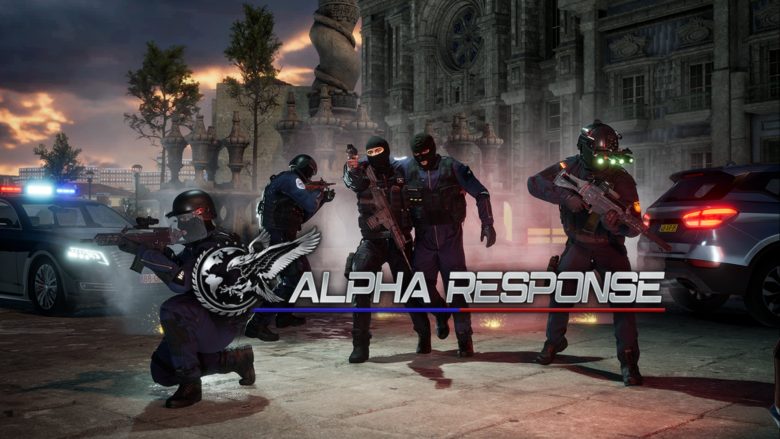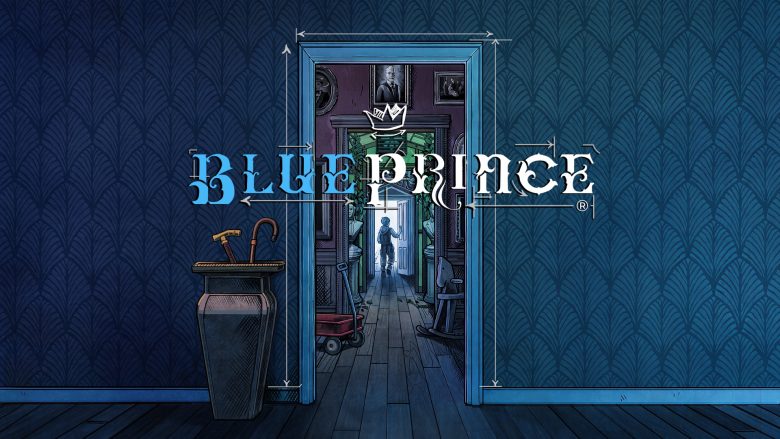A real musical journey enclosed in the world of Sword of Symphony. An ambitious and promising project, directed by the young and brilliant solo-dev, Stephen Ddungu
“Without Music, life would be a mistake” – Friedrich Nietzsche
Today we would like to tell you about Sword of Symphony, a music-action RPG. A project for which we are more than happy to break a…indeed even more than a spear.
As we anticipated, it is a rather ambitious project, because it is directed by a single dev, but also promising given the excellent timing on the project maintained so far.
No accumulated delays, everything is perfectly in order, proof of the tenacity, great willpower and the great skills that Stephen Ddungu is demonstrating to his Community.
Let’s get to know him better to understand this Anthem…
Stephen Ddungu and the Musical Genius
He is a longtime self-taught composer and musician. Additionally, he is an animator and game developer and considers himself an entrepreneur currently working as a single-dev on 3 ambitious large-scale projects: Purpose: VERSA (2017/2019), Purpose: VERSUS (2019) and Sword of Symphony (2020). All this simultaneously with university commitments!
The spark that started it all? The eternal passion for creating music. A self-taught musician with perfect pitch (allowing him to mentally recall any note with precision). He uses this ability to fulfill his strong desire to create and experiment with music, especially orchestral-based scores.

He began composing music digitally at the age of 11. Still does so in an original and regular way. He hones his skills and lets himself be inspired by countless musicians and heterogeneous composition styles. Until he get to forge his “sound“.
“Music composition has always been, without a doubt, one of the fundamental pillars of my life.” – writes Stephen.
In 2017 he made the qualitative leap into the professional world and started a YouTube channel. Here he uploads a portfolio with all the music and covers he had made. His music is very well received and within days he quickly gets 1,000 subscribers on YouTube.
“I will never stop making music on that channel. Not only is it my passion, but that’s where I first got to meet all of you wonderful people who now support me. For that, I will forever be grateful, so my music channel will always hold a very special place in my heart.” – says the solo-dev.
How was Sword of Symphony born?
“This new title, which I started on December 16, 2020, came about because I needed something to base my university final project on that fit the [study Creative Music Technology] criteria. I couldn’t use Purpose at the time, nor did I want to do something that didn’t use my creative skills, I decided to use this opportunity to enrich the story of Purpose even more in an even more “cryptic” way, thus giving life to this project.”

“The premise of Sword Of Symphony is simple, but at the same time it’s probably my most ambitious and creative idea, as it explores the concept of using character-based action gameplay to compose music.” – Stephen admits
It seems this title has nothing to do with the story of Purpose. In fact it is very and deeply connected to the stories of Tobias and Kaleb. Even more than the relationship between Purpose: VERSA and Purpose: VERSUS. This is what the developer suggests to us from his update posts.
“Although how Sword Of Symphony relates to the story of Purpose is currently a secret. Some of my followers have speculated about a Kingdom Hearts/Final Fantasy-like relationship between Sword Of Symphony and Purpose. However I can confirm and assure you that it is nothing of the sort. I’ll be happy to keep you all guessing though. It amuses me!”- confesses Ddungu
The Story of Sword of Symphony
The story of Sword Of Symphony centers on the wielders of music called ‘Composers‘. Inhabitants of the musical realm called ‘Sonata‘. The leader is the young but noble and musically skilled King of Sonata who governs the citizens, making sure that all abide by the laws of tonality, to ensure that consonant harmony works throughout the kingdom. Not only in this arduous task is he assisted by the Royal Council. Composers, essential figures for many reasons, dedicate their lives to composing music, which is the energy source of the soundscape. Furthermore, they take as pupils, young people to be trained and instructed in the practice of music. They are responsible for teaching and supervising the development of their student’s musical abilities. They pass on their knowledge to their Protégé, thus creating new Composers. However there are some rare exceptions; like Protégés who are self-taught.

These individuals are prodigies, indeed they’re able to gain the ability to wield the power of music naturally without a tutor.
Furthermore, the Composers also fight to preserve the tonality of the landscape, innovating new melodies. They experience them in unity with other composers to inspire and help each other develop their music handling skills. This will enable them to reject Taçet, a manifestation of “writer’s block“. They are creatures that feed on the creativity of composers and “rogue” composers who wish to steal the tunes of other colleagues in order to overthrow the Sonata Royal Council.
Who is the protagonist of Sword of Symphony and what is his mission
The similarities between the solo-dev and the protagonist are different. This makes us think that he’s including and merging as a single entity in his creature, which is also why we have defined a Hymn of love to music. The developer and the protagonist share the same name (Stephen – Stefān), both are musical geniuses with perfect pitch…Stefān has a cousin named “Bridgètte” as a tutor, with whom he lives. We know that the dev is self-taught. So, what if at a young age he had been inspired and encouraged by a relative, perhaps a cousin who was passionate about music? Perhaps named “Bridgètte”? Maybe we are running too fast with the imagination or maybe not…but let’s get back to us!

In the game, therefore, we will impersonate Stefān. He is a member of “Opus-I“, a small investigative cell made up of “The Academy” graduates. All young people with extraordinarily exceptional musical abilities and IQs, with the exception of Gavin, who however has his reasons for joining Opus -I (this is still a mystery!). They are exclusively commissioned by the Royal Sonata Council. Together, as a team, they work to solve a number of complex musical mysteries across the kingdom. The Royal Council suspects they are all connected to a deeper diabolical plot…
The music of Sonata threatened by Silence…
A diabolical and deep storyline, includes powerful enemies. Sword of Symphony’s enemies are creatures that feed on the Composers’ creativity and creations.
That is, they feed on Music, creating a writer’s block and returning only Silence… it will be essential for the prosperity of Sonata that our Genius adventure companions use their pens (a fundamental tool for Composers) to the maximum to prevent silence from falling deafening. Defeating them “restore” the music in the areas where they congregate.
Thanks to the constant profile updates of solo-dev, Stephen Ddungu, we know that (for now) we will face 5 types of enemies:
1 • Rest variant – Suspended: ?

These are the most harmless of the Taçet species (as expected – being among the “Rest” variant). They attack with much simpler tunes/rhythms, typically only in self-defense. Also, being a Floater-type, they attack from above; meaning that you, the player, will have to engage them in mid-air combat (using musical aerial combos).
2 • Block variant – Suspended: ?

Unlike the Rest variant, these Floaters attack you preemptively (since The Block variant is specifically farmed for combat). They attack with much more dexterity, often using faster musical melodies/rhythms.
3 • Rest variant – Earth: ?
As a specimen of Taçet in the Rest Variant, these types are also harmless by nature, but often attack when their territory is threatened. However, their attacks are quite weak, as they fight with simple tunes/rhythms; just like their Floater counterpart.
4 • Block Variant – Earth: ?
These are the “standard” enemy types, so they’re typically the most common among the others. They attack with the main motifs and/or supporting motifs that make up the melodic/rhythmic ideas for each battle sequence.
5 • Block Variant – Attacker: ?
These are the toughest and most aggressive of the 5 most common enemy types. They wield sticks to direct and attack you with melodies/rhythms that are much more complex and difficult to evade.
The Combat System of Sword of Symphony
As you might have noticed, everything in this game is Music. Even the creatures we will come across have sounds. More or less complicated rhythms and melodies based on our enemy and his class. In the fights, we will try our hand at musical counterattacks, arpeggios, short pauses… we want to share with you this unique and original Combat System (in expansion) formed by attacks/counterattacks/transitions/combos all with a musical theme.
Attacks
- Whole note rests: You can pause attacking enemies with whole note rests (also known as “whole note rests”). Their duration is 4 beats, in which you will have the opportunity to fight back.
- Arpeggio: One of Stefān’s special musical attacks. Unleashes a musical barrage at the enemy. However, the attack takes time to travel, so it is best used after immobilizing the enemy
Counterattacks
- Enemy Counterattacks: Each successful musical “bar” performed against enemies will remove one “bar” from their health. However, making mistakes will cause enemies to fight back
- Learn Enemy Combos: Thanks to Stefān’s perfect pitch, you can learn enemies’ combos by tapping their rhythm as they attack you. After that, you’ll be able to use their musical attack patterns against them
Transitions
- Sleek Musical Opening Transitions: Initiating the opening attack combo (Anacrusis) while running will allow you to execute a sleek transition that seamlessly transitions into the attack
Combos
- Musical Aerial Combos: When performing aerial combos, the first one acts as an “intro/opener”; launch the enemy into the air to prepare for the next ones, which you can choose and change in real time
- Musical Aerial Combos pt2: After throwing an enemy with the aerial opening combo (Anacrusis), if you are in range, you can quickly shorten the distance and perform an aerial variation of the musical combo of your choice
Understanding the Sword of Symphony art style…
If you have come this far, you will have understood by now the uniqueness of this title. From the plot, to the characters, to Music as a fundamental cornerstone that binds every element in this world that already makes you dream.
The artistic style adopted is hand-drawn; with gentle, elegant and delicate features just like a string symphony would be.
“I decided to take inspiration directly from my 2D hand-drawn art style, not only because it uses line art, but also because all 3D objects look the same as they would if I were to draw them in my own art style in 2D.” – explains Stephen
This choice, totally consistent with the originality of the game, will be another of the distinctive features that will give the right charm and will increase the visibility and appreciation by an already buzzing Community.
We are very eager to find out what other musical and artistic marvels, Stephen Ddungu, has in store for us. We hope you enjoyed this article and intrigued you about the world of Sword of Symphony.
Stay up to date with us for more insights on this title!
Happy Game everyone!









